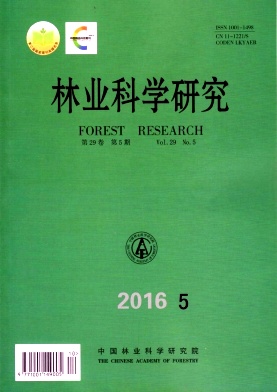|
[1]
|
Styrsky J D, Eubanks M D. Ecological consequences of interactions between ants and honeydew-producing insects[J]. Proceedings of the Royal Society of London Series B, 2007, 274(1607):151-164. |
|
[2]
|
Eubanks M D. Estimates of the direct and indirect effects of red imported fire ants on biological control in field crops[J]. Biological Control, 2001, 21(1):35-43. |
|
[3]
|
Mooney KA. Tritrophic effects of birds and ants on a canopy food web, tree growth, and phytochemistry[J]. Ecology, 2007, 88(8):2005-2014. |
|
[4]
|
Agrawal A A, Fordyce J A. Induced indirect defence in a lycaenid-ant association:the regulation of a resource in a mutualism[J].Proceedings of the royal society of London B,2000,267(1455):1857-1861. |
|
[5]
|
Herms D A, Mattson W J. The dilemma of plants:to grow or defend[J]. Quarterly review of biology, 1992, 67(3):283-335. |
|
[6]
|
Wimp G M, Whitham T G. Biodiversity consequences of predation and host plant hybridization on an aphid-ant mutualism[J]. Ecology, 2001, 82(2):440-452. |
|
[7]
|
Van Zandt P A, Agrawal A A. Community-wide impacts of herbivore-induced plant responses in common milkweed Asclepias syriaca[J]. Ecology, 2004, 85(9):2616-2629. |
|
[8]
|
王思铭, 陈又清, 卢志兴, 等. 云南紫胶虫与粗纹举腹蚁之间的互利关系[J]. 昆虫学报, 2013. 56(3):286-292.
|
|
[9]
|
卢志兴, 陈又清, 张威, 等. 蚂蚁-紫胶虫兼性互利关系对蚂蚁群落多样性的影响[J]. 生物多样性, 2013, 21(3):343-351,389.
|
|
[10]
|
卢志兴, 陈又清, 李巧, 等. 云南紫胶虫种群数量对地表蚂蚁多样性的影响[J]. 生态学报, 2012, 32(19):6195-6202.
|
|
[11]
|
Heil M, McKey D. Protective ant-plant interactions as model systems in ecological and evolutionary research[J]. Annual Review of Ecology, Evolution, and Systematics, 2003(34):425-453. |
|
[12]
|
Roth D S, Perfecto I, Rathcke B. The Effects of Management Systems on Ground-Foraging Ant Diversity in Costa Rica[M]//Ecosystem Management.New York:Springer, 1994:399-413. |
|
[13]
|
Vasconcelos H L. Effects of forest disturbance on the structure of ground-foraging ant communities in central Amazonia[J]. Biodiversity and Conservation, 1999, 8(3):407-418. |
|
[14]
|
Schonberg L A, Longino J T, Nadkarni N M, et al. Arboreal ant species richness in primary forest, secondary forest, and pasture habitats of a tropical montane landscape[J]. Biotropica, 2004, 36(3):402-409. |
|
[15]
|
Klimes P, Idigel C, Rimandai M, et al, Novotny V. Why are there more arboreal ant species in primary than in secondary tropical forests[J] Journal of Animal Ecology, 2012, 81(5):1103-1112. |
|
[16]
|
Samson D A, Rickart E A, Gonzales P C. Ant diversity and abundance along an elevational gradient in the Philippines[J]. Biotropica, 1997, 29(3):349-363. |
|
[17]
|
Suarez A V, Bolger D T, Case T J. Effects of fragmentation and invasion on native ant communities in coastal southern California[J]. Ecology, 1998, 79(6):2041-2056. |
|
[18]
|
吴坚, 王常禄. 中国蚂蚁[M]. 北京:中国林业出版社,2000.
|
|
[19]
|
卢志兴, 李可力, 张念念, 等. 紫胶玉米混农林模式对地表蚂蚁多样性及功能群的影响[J]. 中国生态农业学报, 2016, 24(1):81-89.
|
|
[20]
|
Hoffmann B D, Kay A. Pisonia grandis monocultures limit the spread of an invasive ant:a case of carbohydrate quality[J]. Biological Invasions, 2009, 11(6):1403-1410. |
|
[21]
|
Chao A, Gotelli N J, Hsieh T C, et al. Rarefaction and extrapolation with Hill numbers:a framework for sampling and estimation in species diversity studies[J]. Ecological Monographs, 2014, 84(1):45-67. |
|
[22]
|
Clarke K R, Gorley R N. PRIMER v6 user manual and program[M]. PRIMER-E Ltd:Plymouth, UK. 2006. |
|
[23]
|
陈又清, 王绍云. 蚂蚁和紫胶蚧互利关系中的行为机制[J]. 生态学杂志, 2006, 25(6):663-666.
|
|
[24]
|
Buckley R C, Gullan P. More aggressive ant species (Hymenoptera:Formicidae) provide better protection for soft scales and mealybugs (Homoptera:Coccidae, Pseudococcidae)[J]. Biotropica, 1991, 23(3):282-286. |
|
[25]
|
Moya-Raygoza G, Nault L R. Obligatory mutualism between Dalbulus quinquenotatus (Homoptera:Ciccadellidae) and attendant ants[J]. Annals of the Entomological Society of America, 2000, 93(4):929-940. |
|
[26]
|
Jackson D. Competition in the tropics:ants on trees[J]. Antenna, 1984(8):19-22. |
|
[27]
|
Jackson D. Ant distribution patterns in a Cameroonian cocoa plantation:investigation of the ant mosaic hypothesis[J]. Oecologia, 1984, 62(3):318-324. |
|
[28]
|
Dunn R R, Agosti D, Andersen A N, et al. Climatic drivers of hemispheric asymmetry in global patterns of ant species richness[J]. Ecology Letters, 2009, 12(4):324-333. |
|
[29]
|
Schilman P E, Roces F. Energetics of locomotion and load carriage in the nectar feeding ant, Camponotus rufipes[J]. Physiological Entomology, 2005, 30(4):332-337. |
|
[30]
|
Chen C D, Nazni W A, Lee H L, et al. Research Note A preliminary report on ants (Hymenoptera:Formicidae) recovered from forensic entomological studies conducted in different ecological habitats in Malaysia[J]. Tropical biomedicine, 2014, 31(2):381-386. |
|
[31]
|
Hoffmann B D. Responses of ant communities to experimental fire regimes on rangelands in the Victoria River District of the Northern Territory[J]. Austral Ecology, 2003, 28(2), 182-195 |
|
[32]
|
Wetterer J K. Worldwide spread of the wooly ant, Tetramorium lanuginosum (Hymenoptera:Formicidae)[J]. Myrmecological News, 2010, 13(2):81-88. |





 DownLoad:
DownLoad: